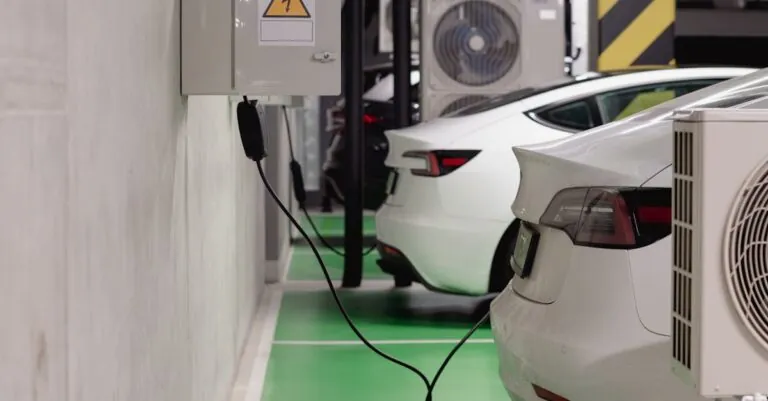In a world where multitasking reigns supreme, a docking station is the unsung hero of productivity. Imagine transforming your cluttered workspace into a sleek command center with just one simple device. It’s like having a personal assistant that doesn’t need coffee breaks or a salary. With a docking station, you can connect multiple devices and peripherals in a flash, making your life easier and your workdays smoother.
Table of Contents
ToggleUnderstanding Docking Stations
Docking stations are essential tools for enhancing connectivity in a workspace. They allow users to connect multiple devices efficiently, streamlining workflow and reducing clutter.
What Is a Docking Station?
A docking station serves as a central hub that connects a laptop to various peripherals. Typically, it features multiple ports, including USB, HDMI, and Ethernet, facilitating device integration. Users can connect monitors, keyboards, mice, and external storage easily through a docking station. It allows for quick transitions between mobile and stationary work setups, making it ideal for professionals on the go.
Types of Docking Stations
Multiple types of docking stations cater to diverse needs. Universal docking stations support a wide range of devices regardless of brand. Thunderbolt docking stations offer high-speed data transfer and multiple high-definition displays. Proprietary docking stations are exclusive to specific laptop models, providing tailored connectivity options. Portable docking stations prioritize mobility with lightweight designs, perfect for frequent travelers. Each type enhances productivity by offering specialized features and conveniences conducive to varying work environments.
Setting Up Your Docking Station
Setting up a docking station streamlines the connection of multiple devices. Follow these steps to ensure a smooth installation process.
Unboxing and Initial Setup
After purchasing a docking station, correctly unbox it to avoid damage. Remove protective packaging from the device and inspect for any visible defects. Place the docking station in a location that allows easy access to ports. Ensure the station is close to power outlets and cables. Connecting the power adapter is the first essential step. Next, plug in any necessary peripherals before moving on to device connections. Review the manufacturer’s instructions for specific setup requirements.
Connecting to Your Devices
Connecting to devices involves establishing a few essential connections. Start by using the appropriate cable to link your laptop to the docking station. Various docking stations offer USB, HDMI, or DisplayPort connections for monitors, depending on the model. Next, plug in peripherals like keyboards, mice, and external drives into the available ports. Most docking stations support multiple connections, so utilize the available options for a seamless experience. Activate the docking station by powering on your laptop; it should recognize the connected devices automatically. Verify successful connectivity through the system settings on your device.
Using Your Docking Station Effectively
Utilizing a docking station enhances productivity and connectivity. It allows seamless interaction with multiple devices, simplifying workflows.
Configuring Displays and Monitors
To set up displays, connect the docking station to external monitors using HDMI or DisplayPort cables. Each port offers different resolutions and refresh rates. When connecting multiple monitors, adjust display settings in the operating system to extend or duplicate screens. Access display settings through control panels or system preferences, enabling optimum arrangements for productivity. Detecting displays usually happens automatically with recent operating systems. Sometimes, manual configuration might be required. Choose resolutions based on monitor specifications to ensure clarity and performance.
Managing Peripheral Devices
Connecting peripherals adds functionality to a workstation. USB ports on the docking station support keyboards, mice, printers, and external drives. To manage these devices effectively, plug them into the appropriate ports and install necessary drivers, if prompted. Utilizing USB hubs connected to the docking station can further expand device connectivity. Monitor connections in system settings to troubleshoot issues quickly. It is crucial to properly eject external drives before unplugging them to avoid data loss. Ensuring that all connected devices function optimally improves overall efficiency.
Troubleshooting Common Issues
Users may encounter several common issues while using a docking station. Addressing these promptly enhances device performance and connectivity.
Connection Problems
Connection issues often arise when a laptop fails to recognize the docking station. First, check cable connections to ensure they are secure. Loose or damaged cables can interrupt the connection, leading to problems. Restarting the laptop usually prompts it to recognize the docking station. In some cases, updating the docking station’s drivers resolves connectivity problems. It’s important to verify compatibility with the laptop model. Lastly, attempting different USB ports may help in establishing a connection.
Performance Issues
Performance issues can significantly affect productivity. Slow data transfer rates often result from using outdated drivers or incompatible settings. Regularly updating drivers ensures optimal performance. Overloading the docking station with too many devices might cause sluggishness. Disconnecting any unnecessary peripherals can alleviate this strain. Display issues can arise as well, especially when using multiple monitors. Adjusting screen resolutions in display settings tends to resolve clarity problems. Lastly, keeping the docking station on a stable surface prevents overheating, which can hinder performance.
Conclusion
Utilizing a docking station can significantly transform a workspace into a more organized and efficient environment. By streamlining connections and enhancing productivity, it allows users to focus on their tasks without the hassle of tangled cables or limited ports.
The right docking station caters to individual needs and preferences, making it a versatile tool for anyone looking to optimize their workflow. With proper setup and management, users can enjoy seamless connectivity and improved performance across their devices.
Embracing this technology not only simplifies daily tasks but also elevates the overall work experience, making it an essential addition to any modern workspace.




